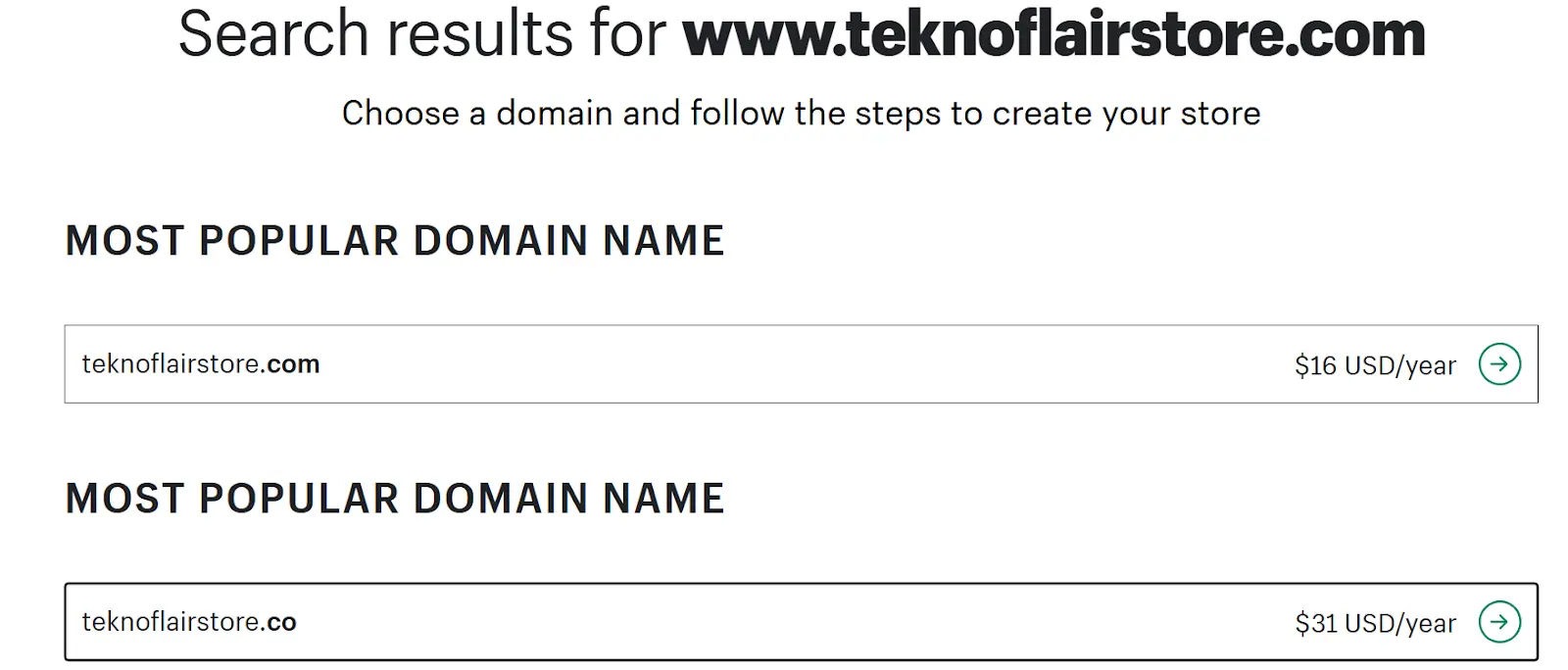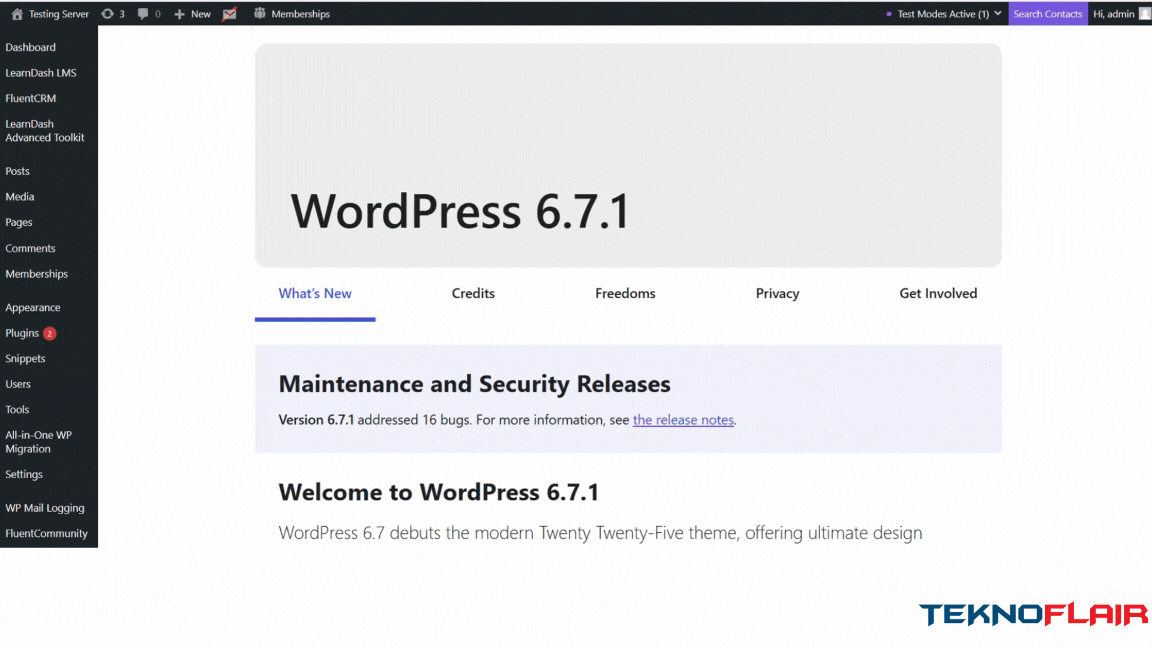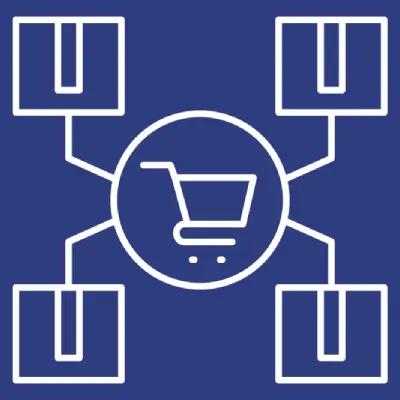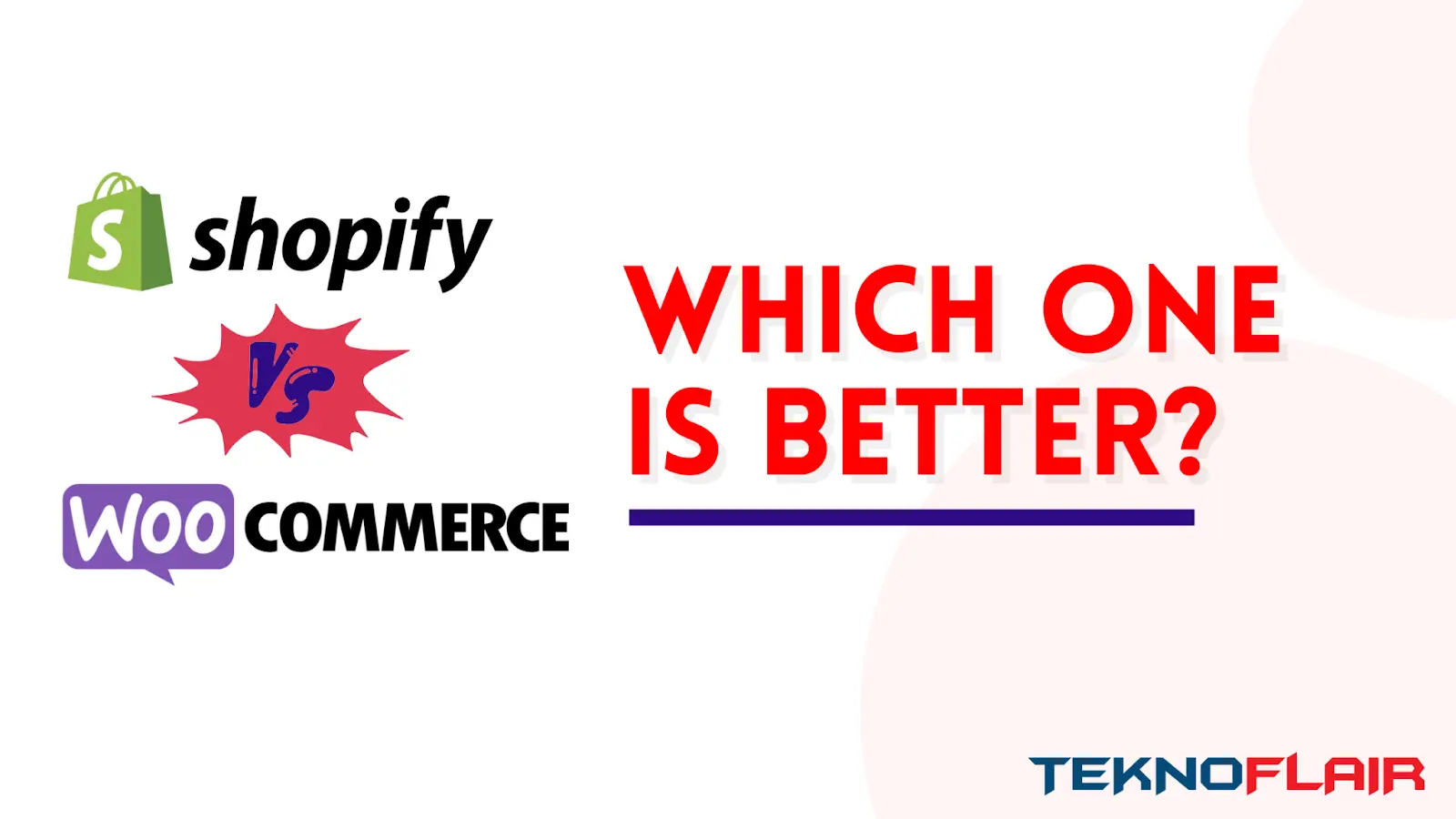When it comes to building an online store, the question of WooCommerce vs Shopify often stands at the crossroads of decision-making for business owners.
Both platforms promise to unlock the doors to e-commerce success, but the path you choose depends on your needs, goals, and technical know-how.
In this guide, we’re diving deep into the features, pros, and cons of each to help you make an informed choice—whether you’re just starting out or scaling your business to new heights.
So, which platform is truly right for your e-commerce venture? Let’s explore the ultimate showdown: WooCommerce vs Shopify.
The Global POV:
Whenever it comes to E-Commerce, two big platforms echo in our minds: WooCommerce & Shopify. Both platforms empower you with an enhanced business solution but operate differently.
That’s why many business owners find it hard to make a choice.
We have delved deep into the WooCommerce and Shopify comparison to help you make the ultimate decision.
But before we begin, let’s take a closer look at a few stats.
- 8.65 million Live Websites on WooCommerce
- 6.6 million Live Websites on Shopify
WooCommerce powers a whopping 8.65 million websites. That’s quite a lot!
So, what does it mean for Shopify? Is it not as good as WooCommerce?
That’s surely not the case. Shopify is an all-in-one solution and has gained popularity. According to Google Trends, Shopify has surpassed WooCommerce as the trending topic worldwide.
This suggests that we may see a power shift as more users switch their loyalties to Shopify; however, it’s not going to happen this year. With the competition still strong, this guide is your beacon in the dark.

Source: Google Trends
Let’s make this guide even more interesting.
Below are the two most important future trends having the power to impact the success of an E-Commerce business.
Key Future Trends:
- Leveraging AI for automation – Moving forward, the world is focused on AI and the faster you adopt it, the quicker you’ll grow. Moreover, automation can help your business provide a tailored shopping experience along with the reduced workload. Many AI tools such as virtual bots – resolve issues promptly, have developed over the past years, but AI certainly won’t stop there.
- Ethical Sustainability – Gen Z & Millennials strongly support companies with a broader vision of sustainability. That’s why, if you want a future in the E-Commerce industry, keep sustainability at the top of your priority list.
These trends can help you become a successful e-commerce business owner.
But, which E-Commerce platform will you choose then?
Let’s start our comparison to help you dig deeper.
Shopify Overview:
Launched in 2006, Shopify is an all-in-one solution for businesses. It has all the cutting-edge functionalities essential for a successful online store. Its intuitive drag & drop builder and user-friendly interface can elevate your online store significantly. What’s even more interesting is that to set up an online store on Shopify, you don’t need to be a coder.
WooCommerce Overview
WooCommerce is an open-source plugin built exclusively for WordPress. Unlike Shopify, it lacks built-in core functionalities and depends on integrating with add-ons and WordPress plugins. To build an online store, it’s not overly difficult but you would require some familiarity with WordPress.
What’s Better: WooCommerce or Shopify?
We know it’s frustrating to choose between two leading platforms,especially, when both offer functionalities that can help your online store thrive.
When it comes to Shopify, its user-friendly interface makes it easy for you to focus on selling products hassle-free. On the other hand, WooCommerce outranks Shopify with its flexibility and control over customization.
So, how can you make the right decision?
Let’s read our research on both platforms for a detailed comparison.
Here’s TeknoFlair’s take:
“Shopify is amazing, but the flexibility and control that WooCommerce offers are unmatched. You can do almost anything with WordPress often without needing to hire a developer, thanks to the wealth of WooCommerce related resources available in the Google knowledge base.”
The Comparison:
So, it’s time to dive into the real talk – the comparison of Shopify and WooCommerce.
This is not a fan-fiction style comparison, rather, it’s a full-fledged value analysis backed by accurate research. Ofcourse, both platforms have their pros and cons, but we will weigh them out to help you choose a winner.
Pricing
“A thing is worth what it can do for you, not what you pay for it.” – John Ruskin
Low-priced products are often click-baits used by companies to lure in customers. But why mention it here? Shopify offers low-priced solutions as a trap to attract more consumers—but is it really worth it?
To answer this, we delved deeper into the pricing of both platforms to determine how much it truly costs to start a new business.
Note: These pricing comparisons cater to new startups, but existing businesses looking to migrate can also gain insights into the cost of running their operations.
Breaking Down Shopify Pricing
What’s the first thing you need when starting an online eCommerce store?
A platform that can manage your inventory and a domain to make your business live and credible. Similarly, when you set up a store in Shopify, you’ll need to purchase a domain, preferably through Shopify’s domain store.

We searched for a domain on Shopify and found that the prices range from $16 to $31 USD. That’s quite steep, especially when compared to cheaper alternatives available from other reputable providers.
Already have a domain? Shopify makes transferring it easy with this domain transfer guide.
Once you’ve secured a domain, it’s time to set up space for your products.

Shopify Packages
Let’s break down Shopify’s plans:
- Basic: This plan offers essential features like 10 inventory locations, 24/7 support, POS Lite, and card rates of 2% for third-party payment providers.
- Shopify: Building on the Basic plan, this option reduces card rates to 1% and allows for 5 additional staff accounts.
- Advanced: While largely similar to the Shopify plan, this tier further reduces card rates to 0.6%, increases staff accounts to 15, and introduces custom reporting and advanced analytics capabilities.
- Plus: The ultimate Shopify plan, it offers unlimited staff accounts, 40x more customizable checkout options, wholesale/B2B features, and 24/7 priority phone support.
What Does This Mean for Startups?
If you’re starting small, the Basic plan seems like a good starting point, priced at $25 USD per month. However, Shopify’s lack of flexibility for customization can quickly escalate costs. Adding features like email automation, CRM, and simplified checkout processes could push your monthly expenses to $200–500 USD.
The real challenge? Scaling your business. Depending on your needs, scaling with Shopify could cost anywhere between $2,500–3,000 USD per month.
Exploring WooCommerce Pricing
WooCommerce is an open-source plugin, free to install, but it requires separate hosting. Hosting prices can vary depending on the provider and any additional extensions you opt for.
Here’s where WooCommerce stands out: flexibility and control over customization. With even basic coding knowledge, you can transform your WordPress website into a full-fledged eCommerce store.
Want more customization? With the ability to tweak CSS and themes, you can personalize how your store looks and functions, enhance the shopping experience, and add a range of features—all without hefty costs.
But There’s a Catch
If coding isn’t your strength, you’ll likely need to hire a developer. Building a WooCommerce store could cost anywhere from $500–2,000 USD depending on your requirements.
So, Who’s the Winner?
It depends. Shopify is an all-in-one, hassle-free solution that works well for beginners or those who want simplicity. However, if you’re tech-savvy or eager to learn, WooCommerce offers unmatched flexibility and customization options.
Score: WooCommerce 1
Ease of Use
When choosing an e-commerce platform, ease of use is a key consideration. Let’s take a look at what it’s really like to set up a store and add products with Shopify and WooCommerce.
Shopify:

- Setup: Shopify is renowned for its simplicity. You can quickly sign up, choose a theme, and start customizing your store with its intuitive drag-and-drop builder. The process requires minimal technical effort—just fill in the necessary details, upload your products, and you’re all set.
- Adding Products: Adding products is a breeze. You simply fill out a form to upload images, descriptions, and variants (like size or color). Inventory management and shipping rules are easily handled directly on the platform.
- Challenges: While Shopify is easy to use, some advanced features, like reporting tools or complex shipping setups, may require additional paid apps.
WooCommerce:

- Setup: WooCommerce is a plugin for WordPress, which means you first need to install WordPress, choose a hosting provider, and then install the WooCommerce plugin. This setup is more hands-on and requires some technical know-how, especially when it comes to themes and plugins.
- Adding Products: After setup, adding products is similar to Shopify, but WooCommerce offers more customization options. You’ll have full control over each product’s page, but you need to be comfortable navigating WordPress. Payment and shipping methods must be configured manually, unless you use specific plugins.
- Challenges: Without technical knowledge, the setup can be more time-consuming. You may encounter issues like theme conflicts or the need for additional plugins, and for more complex functionality, you might need to hire a developer.
Who Wins?
Shopify provides a faster, more beginner-friendly experience, perfect for those who want to launch a store quickly and easily with minimal technical involvement. It’s an excellent choice for newcomers to e-commerce looking for a smooth and hassle-free setup.
Score: Shopify 1
Who’s leading? WooCommerce vs Shopify
WooCommerce = 1
Shopify = 1
Customization
Customization is crucial for aligning your store with your brand’s identity, especially for B2C sellers aiming to build customer loyalty. While Shopify offers customization options through apps and themes, its flexibility is limited and often comes at an additional cost. In contrast, WooCommerce, powered by WordPress, offers full control over both design and functionality, allowing for a more personalized store experience.
Who Wins? WooCommerce excels in customization, offering greater flexibility without relying on third-party apps, while Shopify’s options are more restricted and often costly.
Score: WooCommerce 1
Payment Options
Payment options are essential for a seamless customer experience, as offering a variety of methods enhances trust and boosts conversion rates. Shopify supports multiple payment gateways, including its own Shopify Payments, PayPal, and Stripe. However, Shopify charges transaction fees when using external payment providers like PayPal or Stripe. For example, the fee can be 2.9% + 30¢ per transaction on the basic plan, which can add up for high-volume sellers.
WooCommerce offers greater flexibility in payment gateway integrations and doesn’t impose any transaction fees, apart from those charged by your payment processor. This makes WooCommerce a more cost-effective option, especially for store owners who want to minimize payment processing costs.
Who Wins? WooCommerce wins due to its flexibility in payment gateway integration and the absence of transaction fees, making it a more cost-effective option for many store owners.
Score: WooCommerce 1
Integrations & Add-ons
Integrating tools and services into your e-commerce store can greatly enhance functionality and streamline operations. Shopify offers over 3,200 apps, covering marketing, sales, and customer support. While its marketplace is extensive, many powerful apps come with additional costs, and its flexibility is limited to what’s available.
WooCommerce, as a WordPress plugin, offers unmatched flexibility, allowing integrations with any service that offers a WordPress plugin. With access to thousands of free and premium plugins, WooCommerce gives you full control over integrations and customizations.
Who Wins? WooCommerce wins due to its unparalleled flexibility and access to the entire WordPress plugin ecosystem, providing greater control over store customization.
Score: WooCommerce 1
Dropshipping
Dropshipping allows store owners to sell products without handling inventory, making it a low-risk model ideal for new entrepreneurs. Both Shopify and WooCommerce offer dropshipping features, but they differ in ease of setup and maintenance.
Shopify simplifies dropshipping by integrating seamlessly with tools like Oberlo, allowing automatic order fulfillment and easy product imports. However, Shopify charges a subscription fee, and some tools may have additional costs.
WooCommerce also supports dropshipping but requires more setup and ongoing maintenance with plugins like AliDropship. It offers more customization but demands a higher level of technical expertise.
Who Wins? Shopify wins for its user-friendly, streamlined dropshipping experience with easy tool integrations like Oberlo.
Score: Shopify 1
Support
Customer support is crucial for ensuring smooth store operations, especially during technical issues. Shopify provides robust 24/7 customer support through chat, email, and phone, offering quick assistance. However, support levels vary by subscription plan, with higher-tier plans providing phone support.
WooCommerce, being open-source, lacks direct customer support. Users must rely on community forums, WordPress developer support, or third-party experts for help.
Who Wins? Shopify wins with its reliable 24/7 customer support, offering peace of mind for those who need assistance.
Score: Shopify 1
Final Winner
After evaluating both platforms on various aspects, the overall score gives WooCommerce an edge over Shopify. WooCommerce scores a solid 4, while Shopify garners a 3.
Winner: WooCommerce
Shopify vs WooCommerce – What Should You Choose?
You’ve read through the comparison and now you’re familiar with the ins and outs of both Shopify and WooCommerce. But the big question remains: Which platform should you choose?
If you’re still unsure, don’t worry. This section is designed to help guide your decision. We understand that choosing between two great platforms with so many features can be challenging. So, we’ve kept it concise to help you make a quick, informed choice.
Budget – Do You Really Need It?
When searching for an e-commerce platform, it’s easy to get overwhelmed by the abundance of features some platforms offer. This often leads to impulsive decisions without carefully considering your needs.
The key factor here is your budget.
If you have a healthy budget, Shopify might be a better option due to its all-in-one service and ease of use, though it can be more expensive over time. On the other hand, WooCommerce is more affordable upfront, but costs can increase with hosting and additional features.
If you’re just starting out, WooCommerce is likely the more cost-effective choice, offering all the functionalities you’ll need at a lower cost.
Control Over Your Store
If control and flexibility are important to you, WooCommerce stands out with its unmatched customization options. It gives you full control over your store’s design and functionality, allowing you to tailor every detail.
However, Shopify, while more limited in terms of customization, simplifies store management with its integrated platform and user-friendly interface.
So, if you value complete control over your store, WooCommerce is your best bet.
Let TeknoFlair Fulfill Your Needs with WooCommerce Development Services
If you opt for WooCommerce, TeknoFlair is here to provide expert WooCommerce development services tailored to your specific needs. Our team of skilled developers and designers will work closely with you to optimize your store’s functionality, appearance, and performance.
Whether you need custom themes, plugin integration, or advanced features, we ensure your WooCommerce store operates efficiently, drives customer engagement, and helps achieve your business goals.
With TeknoFlair, you get a seamless, personalized experience that enhances your e-commerce presence.
Final Thoughts
Choosing between WooCommerce and Shopify is no small feat, as both platforms offer unique strengths that cater to different business needs.
Shopify shines with its all-in-one, user-friendly setup, perfect for entrepreneurs who want to get started quickly without the need for technical expertise. It’s ideal for those who prioritize simplicity and convenience, especially when scaling operations.
On the other hand, WooCommerce offers unparalleled customization and flexibility, making it a top choice for those who want more control over their store’s design and functionality.
If you’re comfortable with WordPress and have the technical know-how, WooCommerce provides endless possibilities to tailor your store exactly how you envision it.
Ultimately, the decision boils down to your specific needs. If you’re looking for an easy-to-use, fully integrated platform that handles everything for you, Shopify may be the better choice.
But, if you need complete freedom to customize and grow your store on your own terms, WooCommerce stands out.
In the ever-evolving e-commerce world, both platforms have their place. Consider your budget, technical skill, and long-term goals before making a decision.
With the right platform, you can create a thriving online store that aligns with your vision and meets the demands of today’s competitive marketplace.
FAQs
What are the limitations of WooCommerce?
While WooCommerce is highly customizable, it requires more hands-on management compared to Shopify. Users need to handle hosting, security, and updates, making it less user-friendly than Shopify vs WooCommerce. Additionally, WooCommerce pricing vs Shopify can be tricky since transaction fees, plugins, and themes add to the cost, making it complex for non-technical users.
Is it worth moving from WooCommerce to Shopify?
Switching from WooCommerce to Shopify can be beneficial for those seeking simplicity. Shopify vs WooCommerce reveals Shopify’s managed platform, which means no technical setup and more straightforward scaling. While WooCommerce or Shopify offers great flexibility, Shopify provides robust customer support and handles security, which is a huge advantage over WordPress or Shopify for e-commerce.
Does WooCommerce take a cut of sales?
No, WooCommerce doesn’t take a cut of sales. However, it relies on payment gateways like PayPal or Stripe, which charge fees. On the other hand, Shopify vs WooCommerce often sees Shopify’s transaction fees if you use external payment providers. WooCommerce pricing vs Shopify should be considered when evaluating overall costs, as WooCommerce allows for more flexibility with payment systems.
How many products can a Shopify store handle?
Shopify can handle an unlimited number of products, depending on your subscription plan. This scalability makes it more flexible than WooCommerce shopify, where performance may decline with a large inventory unless optimized. When comparing Shopify vs WooCommerce, Shopify is often the preferred choice for users who need Shopify vs WordPress WooCommerce for large-scale e-commerce.
What are the limitations of Shopify?
While Shopify vs WordPress for eCommerce offers a user-friendly interface, it comes with limitations, such as transaction fees unless using Shopify Payments. It’s also less flexible than WooCommerce in terms of customization, which makes WooCommerce vs Shopify dropshipping more favorable for those who want deep customization. WooCommerce Shopify users may find it more suited for businesses with a specific design vision.






